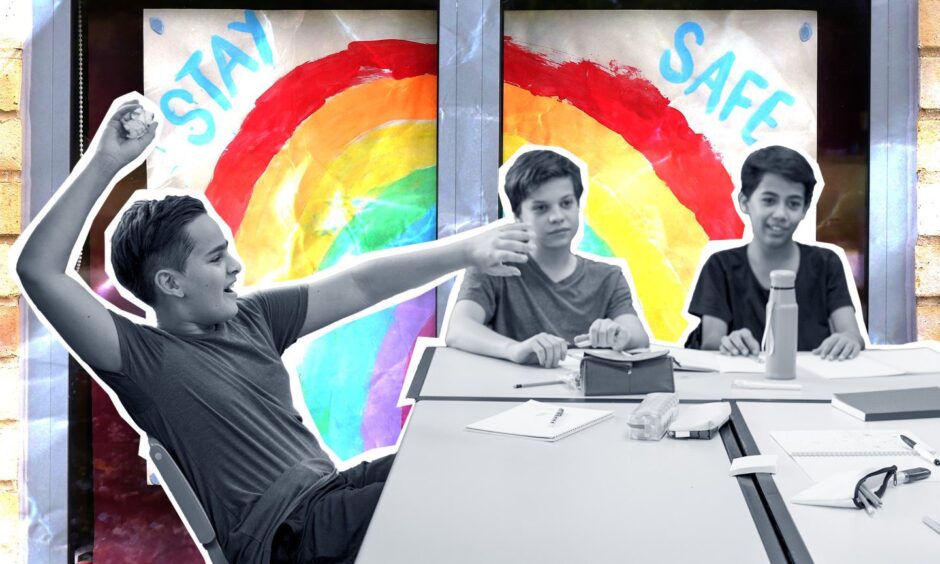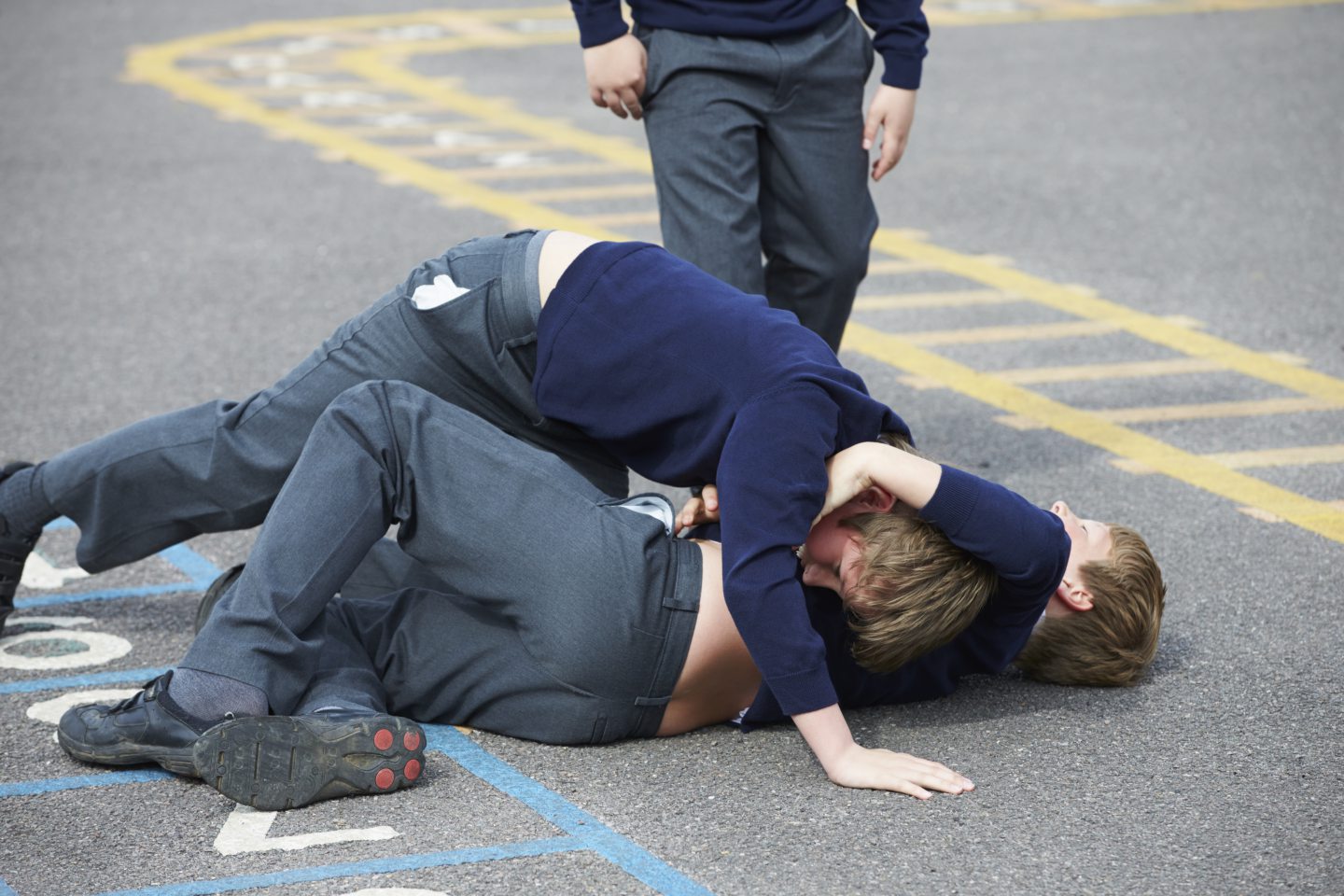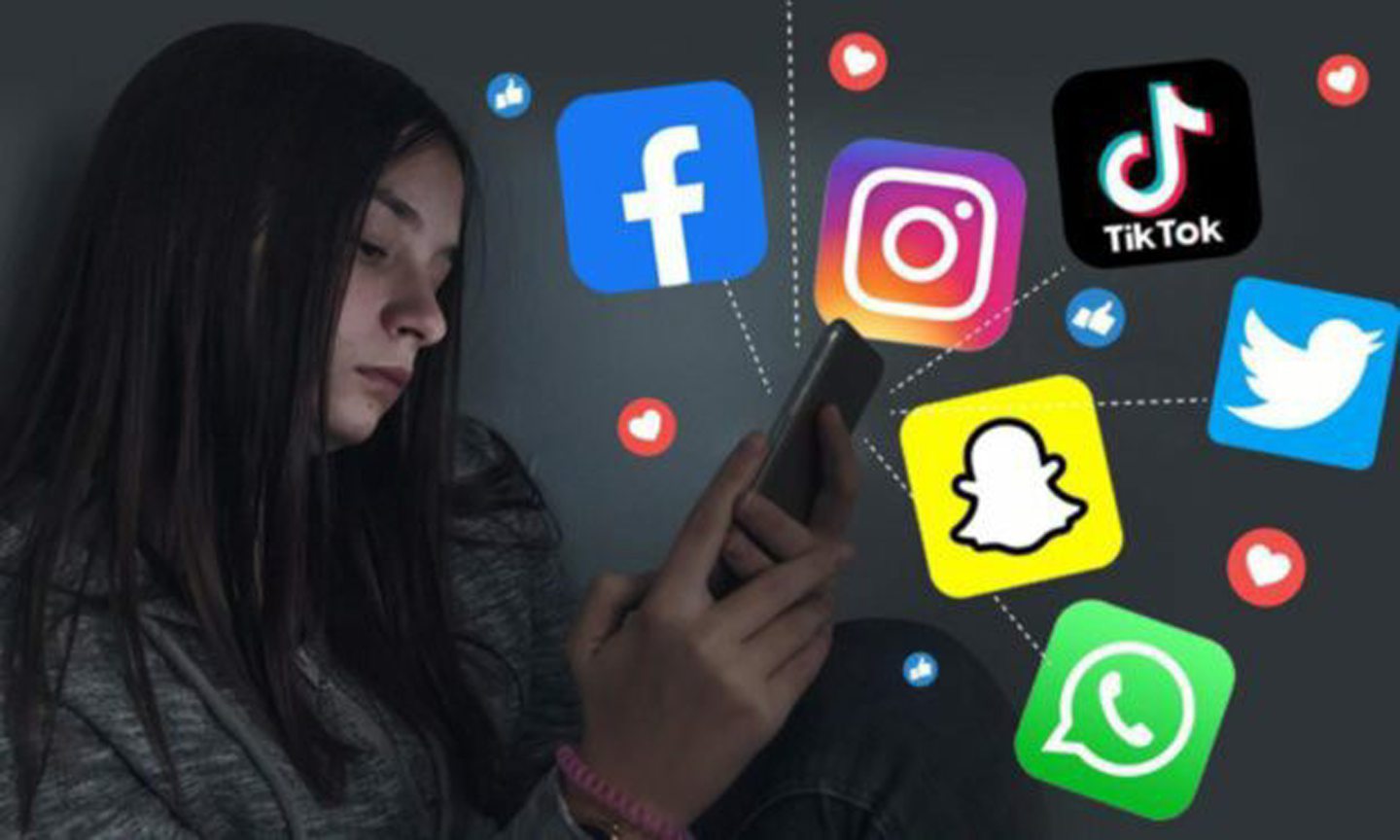
Fighting, truancy, lateness, and a lack of respect.
All have increased in our schools since Covid, according to a Moray head teacher who has exclusively opened up to The P&J about the impact of lockdown and alarming issues with pupil behaviour.
The Moray head’s whistleblowing accounts reaffirm something I first heard last year from another head teacher at a north-east secondary school — that pupil behaviour has deteriorated significantly since lockdown.
Now this anonymous head teacher at a secondary school in Moray has come forward and told us about the changes in pupil behaviour since schools reopened their doors after shutting for five months during 2020.
Here’s what they’ve observed…
Long list of pupil behaviour that has ‘got worse since lockdown’
“There’s been an increase in fighting between pupils,” they said.
“Lateness to class. Refusal to follow instructions or go to lessons. Some internal truancy, wandering. Pupils unable to engage in lessons.
“A large increase in absenteeism, although that’s a UK-wide issue. But attendance is a real concern at the moment.
“There’s a lack of respect for people and systems that are in place.
“Those are the things which I’d say are different to before. It’s a small minority, but those things have got worse since lockdown.”
Generation anxiety: Some pupils still ‘struggling to cope with a full timetable’
And three and a half years after schools re-opened, some pupils are still unable to fulfil a full timetable.
“Some of our pupils are struggling to cope with a full timetable at the moment,” the head told us.
“There have always been pupils who find being in large classrooms causes them anxiety, but I’d say we probably have seen an increase in that since we came back from lockdown.
“For whatever reason, anxiety has increased among a lot of our young people.
“So we’ve got a range of bespoke timetables to allow pupils to access education and build back up to full-time.”
I asked the head teacher whether they thought deteriorating behaviour and increased anxiety were linked to lockdown.
“I’m not a psychologist, but there could be a connection,” they told me.
Declining social interaction skills and difficulty with ‘crowded spaces’
“During lockdown, I think some of our young people found themselves in routines that weren’t as healthy, sleeping longer, and not following the routine that school forces upon them.
“So I think there is a legacy there. Routines were so askew that some pupils found it really, really difficult to come back and be in a school routine.
“There is an issue with being in large, crowded spaces with some of them. If you’ve been used to being at home and it being quiet, it’s a huge change.
“And I think there was a little bit of those social interaction skills lost, because they were on their own so much [during lockdown].
“There must be people out there looking into this, into the long-term effects of Covid and isolation on children. It would be a fascinating study.
“I think there are key points in a child’s development when social interactions are vital, so it would be interesting to see what the long-term effect is.”
‘Traumatic’ impact of Covid on youngsters
Looking for more on the impact of lockdown on pupil behaviour, I contacted Scottish teachers’ union EIS.
Anne Keenan, the union’s assistant secretary for education and equality, said there were a number of factors behind deteriorating pupil behaviour, including lack of investment, teacher shortages and societal issues.
But she called out the impact of Covid on youngsters as “traumatic”.
“We can’t ignore the traumatic impact of Covid.
“We can’t forget that what that has produced is a generation of children whose personal and social and emotional development has been seriously inhibited.”
The north-east head teacher I spoke to last year mentioned that pupils transitioning to S1 from P7 are noticeably less mature than before Covid.
This is something Anne also touched on.
“It’s a crucial stage, and what we’re seeing is young people – who were isolated during periods of lockdown – struggling to express their feelings.
“That’s then displaying as perhaps anger, confusion, frustration. And that can come out as violence and aggression.”
‘A perfect storm’: ‘Emerging behaviours’ that haven’t been seen before
A major survey by EIS at the end of last year laid bare the scale of violence in schools.
More than four in five said there are incidents of ‘violence and aggression’ every week in school.
And in a more recent survey by the union GMB Scotland, almost every pupil support assistant (PSA) – 98% – in Aberdeen said they had witnessed or suffered violence or verbal abuse.
The Moray head teacher told me pupils were more likely to “sort things out” physically than previously.
But they were unsure to what extent this was entirely down to lockdown disrupting their development, naming social media as a malign influence.
“I do feel we’re seeing emerging behaviours week in, week out, where you think ‘hmm, I’m not sure we’ve seen that before’.
“You do wonder if it’s a legacy of Covid. And if it is, how long it will continue. Will it be when those who were in nursery during lockdown finish their schooling?
“Covid has certainly affected our young people, but I don’t know to what extent these problems are totally down to Covid – I think it’s probably a range of factors.
“I do think social media has a huge influence, all these Tik Tok dares and everything getting filmed.
“I’m quite sure that if social media wasn’t a thing, we wouldn’t see some of these behaviours.
“In some ways it’s a bit of a perfect storm, with social media and then Covid on top of it. I think it’s difficult to identify one cause.”
‘There is no quick fix’
Regardless, it’s clear schools have a problem. Heads, teachers and parents are all saying the same things.
Where do we go from here?
“There is no quick fix,” said the Moray head.
“We are looking to get more training for our staff on different strategies to help manage these new behaviours that we’re seeing more often.
“We’re focussing heavily on attendance and lateness, really scrutinising that. We’re in discussions with families and anyone else who can support us. Consistent messaging around promoting and celebrating the positive behaviours as well.
They added: “The vast majority of our pupils have exemplary behaviour, and I think in times like these when we see unusual behaviours, the bad sometimes clouds the good we see every day.”
Have you experienced changed behaviour in school since lockdown? Contact us at schoolsandfamily@pressandjournal.co.uk




Conversation